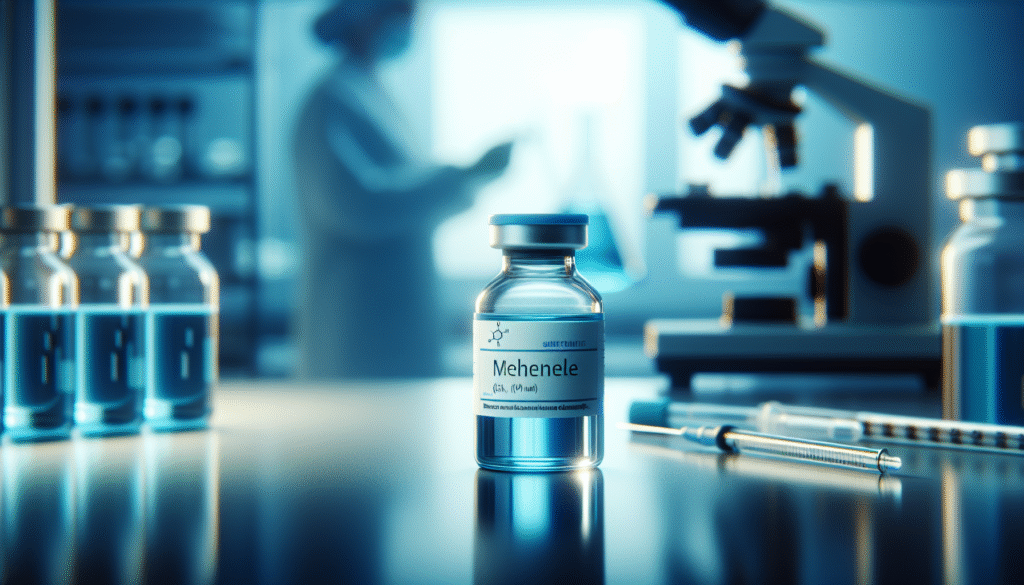
What if a single dye could transform the way you diagnose certain medical conditions? Methylene blue, a synthetic dye with a fascinating history, has emerged as a crucial diagnostic tool in various medical fields. Understanding its applications, mechanisms, and best practices can significantly enhance your effectiveness and accuracy in diagnostics.
Understanding Methylene Blue
Methylene blue is not just a simple dye; it carries a rich medical history. Originally synthesized in the 19th century, its uses have gradually expanded from treating malaria to now serving as a valuable diagnostic agent. You might wonder how this dye has transitioned into the medical realm and what specific roles it plays today.
The Chemical Composition and Properties
Methylene blue, chemically known as thionine, is characterized by its vibrant blue color, which is highly soluble in water. This solubility is crucial for its application in various medical tests and treatments.
| Property | Details |
|---|---|
| Molecular Formula | C16H18ClN3S |
| Molecular Weight | 319.85 g/mol |
| Solubility in Water | Highly soluble |
| Color | Blue |
Mechanism of Action
The diagnostic capabilities of methylene blue are largely attributed to its redox properties. It can accept and donate electrons, making it a valuable reagent in various biochemical reactions. In blood, it can convert methemoglobin back to hemoglobin, which is particularly useful for certain types of cyanide poisoning. Understanding this mechanism allows you to apply methylene blue in a targeted manner during diagnosis and treatment.
Applications in Diagnosis
The application of methylene blue as a diagnostic tool encompasses several medical fields. Each application varies in its methodology but maintains a common thread: the dye’s ability to provide clarity in diagnosis and inform potential treatments.
Surgical Navigation
In surgical settings, methylene blue is often utilized as a dye to enhance visibility. For procedures such as sentinel lymph node biopsies, the dye can help delineate specific anatomical structures and identify lymph nodes that may contain cancerous cells. If you are involved in surgical practice, understanding the proper techniques for applying methylene blue can significantly improve patient outcomes.
Best Practices for Surgical Application
- Preparation: Ensure to dilute methylene blue appropriately to avoid potential complications.
- Dosage: Administer a controlled amount; excessive dye can lead to complications like skin staining or adverse reactions.
- Visualization: Utilize advanced imaging equipment to enhance the identification of dyed tissues.
Diagnostic Imaging
In the realm of diagnostic imaging, methylene blue acts as a contrast agent. It can enhance the visibility of certain tissues and anomalies on imaging studies, such as MRI or CT scans. This capability is particularly useful in diagnosing conditions like tumors or blockages.
Best Practices for Diagnostic Imaging
- Patient Evaluation: Assess the patient’s history and potential allergies before administration.
- Timing: Administer the dye at the right moment in the imaging process to maximize its effectiveness.
- Post-Procedure Monitoring: Observe the patient post-administration for any adverse reactions.
Pathological Assessment
Methylene blue is also utilized in histopathology for staining tissues. It enhances the visualization of cellular structures, aiding in the identification of pathological changes. Familiarity with staining techniques can significantly aid in your diagnostic capabilities.
Techniques for Pathological Assessment
| Procedure | Description |
|---|---|
| Simple Stain | Using methylene blue for quick assessments of cellular morphology. |
| Vital Staining | Applying methylene blue to living cells to assess viability. |
| Frozen Section | Utilizing the dye in rapid assessments during surgery for immediate results. |
Evaluation of Methemoglobinemia
Methemoglobinemia occurs when hemoglobin is oxidized to methemoglobin, severely impairing oxygen transport. Methylene blue serves as a reducing agent to reverse this condition. Understanding when and how to use methylene blue in such emergencies is critical for your clinical practice.
Best Practices for Managing Methemoglobinemia
- Diagnosis: Confirm methemoglobinemia through blood tests before administration.
- Administration Guidelines: The typical dose is 1-2 mg/kg, administered intravenously over five minutes.
- Monitoring: Keep a close watch on vital signs and methemoglobin levels post-treatment to determine the efficacy of the intervention.

Safety and Contraindications
While methylene blue is a highly effective diagnostic tool, it is essential to be aware of its safety profile and potential contraindications. Your knowledge of these factors can help prevent adverse outcomes.
Potential Adverse Effects
Methylene blue is generally well-tolerated, but potential side effects include:
- Nausea and vomiting
- Allergic reactions (rash, itching)
- Blue discoloration of urine and skin
Considering these effects, it is crucial to thoroughly assess a patient’s medical history prior to administration.
Contraindications
In some cases, methylene blue should be avoided:
- G6PD Deficiency: Patients with glucose-6-phosphate dehydrogenase deficiency are at risk for hemolytic anemia when using methylene blue.
- Serotonin Syndrome: Concurrent use with certain medications, particularly SSRIs, can trigger serotonin syndrome.
- Pregnancy and Lactation: Methylene blue’s safety in pregnant or breastfeeding individuals has not been established; caution is advised.
Alternative Diagnostic Tools
Recognizing that methylene blue is not the only diagnostic tool available can enhance your practice. Appreciating other options allows you to tailor your approach based on the unique needs of each patient.
Other Staining Agents
Several alternative staining agents may serve similar purposes, including:
| Staining Agent | Application Areas |
|---|---|
| Hematoxylin | Staining nuclear material in histology. |
| Giemsa Stain | Used for identifying blood cells and parasites. |
| Bromothymol Blue | Useful in assessing pH in biological samples. |
Imaging Modalities
In diagnostics, imaging modalities like ultrasound, MRI, and CT scans also provide valuable insights. Each method has its strengths and limitations, so familiarity with these tools allows you to make informed decisions about patient care.

Looking Ahead: Future of Methylene Blue in Diagnostics
As understanding of methylene blue continues to evolve, so too do its applications. Ongoing research is examining its role in conditions such as Alzheimer’s disease, where it may provide protective benefits against neurodegeneration. Keeping abreast of these developments is vital to ensuring you adopt the best practices in your field.
Emerging Research Areas
- Neurodegenerative Diseases: Investigating the potential of methylene blue as a neuroprotective agent.
- Antimicrobial Properties: Researching the potential of methylene blue in treating infections, particularly in a hospital setting.
- Cancer Therapies: Exploring its ability to improve imaging and potentially enhance the efficacy of certain chemotherapeutic agents.
Conclusion
Your approach to utilizing methylene blue as a diagnostic tool must be informed and strategic. By understanding its properties, applications, and best practices, you equip yourself to enhance patient safety and diagnostic accuracy significantly. Invoking a combination of knowledge and practical skills ensures that you pave the way for a more effective and compassionate medical practice.
In the ever-evolving landscape of medical diagnostics, methylene blue represents not just a tool, but a pathway toward improved patient outcomes and a deeper understanding of complex medical conditions. By adhering to sound practices, ongoing education, and the integration of emerging research, you will continue to enhance your role as a key player in patient care and diagnostic innovation.